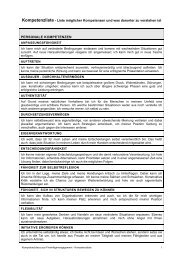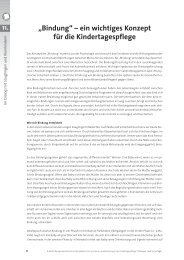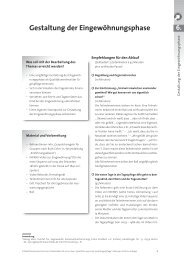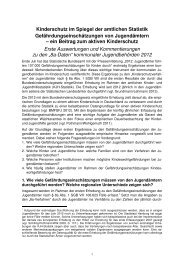download - Deutsches Jugendinstitut e.V.
download - Deutsches Jugendinstitut e.V.
download - Deutsches Jugendinstitut e.V.
You also want an ePaper? Increase the reach of your titles
YUMPU automatically turns print PDFs into web optimized ePapers that Google loves.
The goals of this Program are:<br />
− making parents and preceptors aware of educational needs of the children;<br />
− elaboration and implementation of regional or local programs for equalizing<br />
educational chances, focused on upgrading the quality of educational system<br />
and introduction of solutions increasing effectiveness of education and<br />
upbringing;<br />
− adapting education to the needs of knowledge-based economy;<br />
− implementation of a new model of working with a student, focused on<br />
increasing key competences and skills allowing for finding an employment in<br />
the future;<br />
− preventing discontinuation of school obligation or leaving school on a lower<br />
level of education.<br />
− reinforcing an upbringing function of a school, family and local community;<br />
− managing students' free time, especially the period of Summer holidays<br />
− preparing entities of local government to elaborating and carrying out<br />
educational programs, as well as to applying for the EU funds.<br />
The program presented here assumes that the above goals will be carried out by local<br />
government institutions, while central administration institutions (voivodship offices) play<br />
a role of grant -providers in this situation.<br />
The idea of the project is clearly inspired by procedures which has been present for<br />
years in non-governmental sector or in European programs: determining priorities, contest<br />
of Project, appointing an assessing committee, preparation of reports and evaluation.<br />
Advantages of such a solution are: flexibility of the program, possibility of adapting it to<br />
local needs, clear rules of functioning. The government collects information on problems<br />
with implementation of the program as they appear and reacts immediately. An example<br />
here is a change of the percentage of the local government contribution from 50 % to<br />
30 %. The level required in the pilot program proved to be too high and prevented local<br />
governments from using a big part of the resources.<br />
An example of this project show clearly important questions connected with<br />
functioning of the Project combining thinking in central and local aspects. It can be<br />
reduced to saying that: a support of the central level should consist of preparation of<br />
universal yet flexible tools and procedures, which could be used in local communities to<br />
help prepare a professional diagnosis of barriers, inequalities as well as needs, actions and<br />
possibilities connected with them. Secondly, the central government should help, wherever<br />
it is necessary, in changing the brain patterns, expanding the horizons and database of ideas<br />
on how to equalize educational and life opportunities of children and youth. Thirdly, the<br />
central government's task is to build a functional communication and experience sharing<br />
mechanisms, linking all the project's participants. Finally, it is the central government who<br />
is responsible for a project and implementation of assessment and evaluation procedures,<br />
focused not only on the control, but more importantly on providing feedback to local<br />
governments and NGOs running specific actions. Local government and local NGOs<br />
should be provided by a wise content-related support consisting rather of a set of tools<br />
than ready-made solutions. Various forms of dialogues in local communities should be<br />
13

















